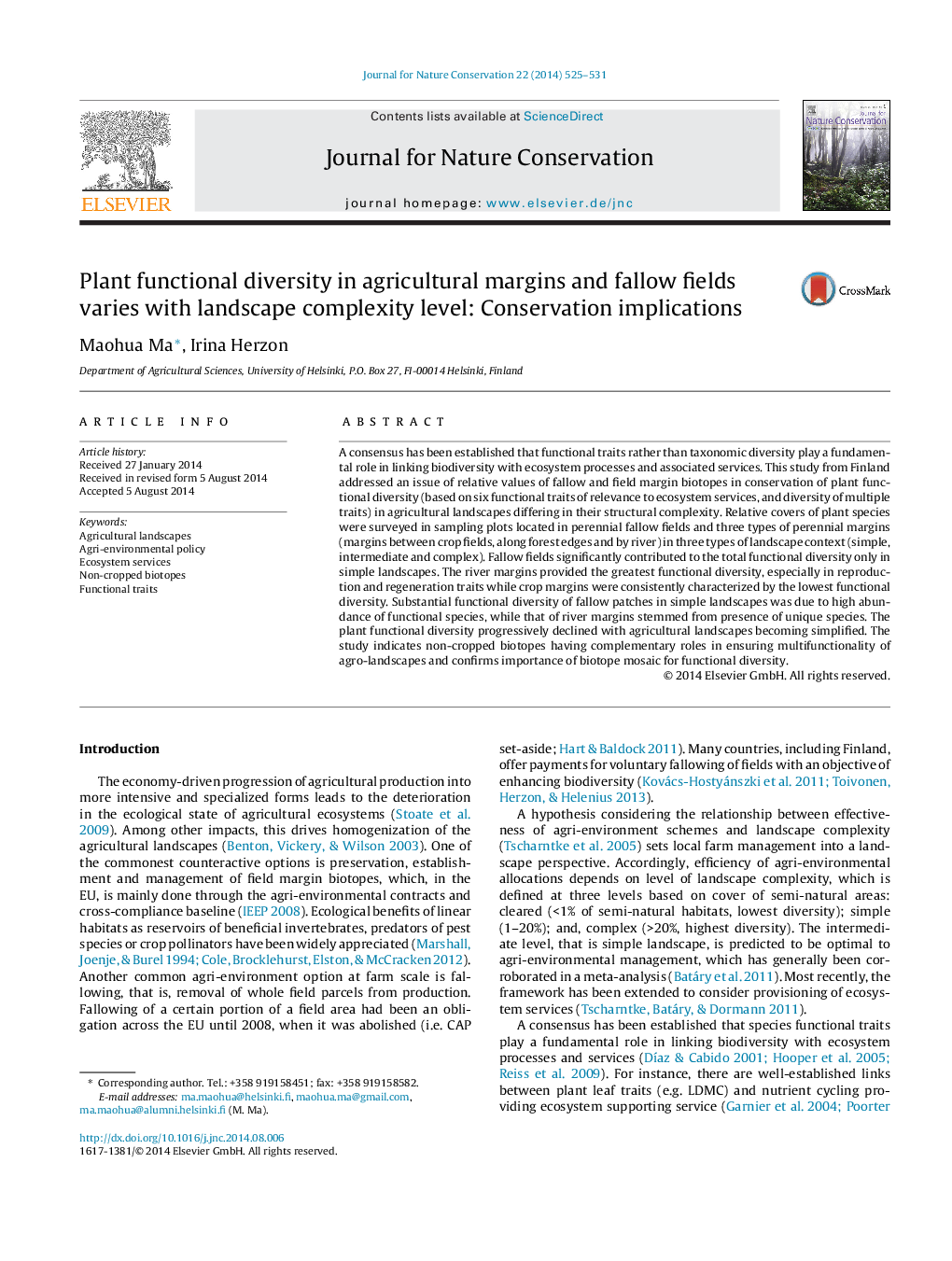| Article ID | Journal | Published Year | Pages | File Type |
|---|---|---|---|---|
| 4399752 | Journal for Nature Conservation | 2014 | 7 Pages |
•Fallow fields had the highest contribution to the total functional diversity in simple landscapes.•River margins supported the greatest functional diversity.•Fallows and margins displayed differences in diversity of individual functional traits.•Fallows had few unique species but supported high species abundances per sample.
A consensus has been established that functional traits rather than taxonomic diversity play a fundamental role in linking biodiversity with ecosystem processes and associated services. This study from Finland addressed an issue of relative values of fallow and field margin biotopes in conservation of plant functional diversity (based on six functional traits of relevance to ecosystem services, and diversity of multiple traits) in agricultural landscapes differing in their structural complexity. Relative covers of plant species were surveyed in sampling plots located in perennial fallow fields and three types of perennial margins (margins between crop fields, along forest edges and by river) in three types of landscape context (simple, intermediate and complex). Fallow fields significantly contributed to the total functional diversity only in simple landscapes. The river margins provided the greatest functional diversity, especially in reproduction and regeneration traits while crop margins were consistently characterized by the lowest functional diversity. Substantial functional diversity of fallow patches in simple landscapes was due to high abundance of functional species, while that of river margins stemmed from presence of unique species. The plant functional diversity progressively declined with agricultural landscapes becoming simplified. The study indicates non-cropped biotopes having complementary roles in ensuring multifunctionality of agro-landscapes and confirms importance of biotope mosaic for functional diversity.
